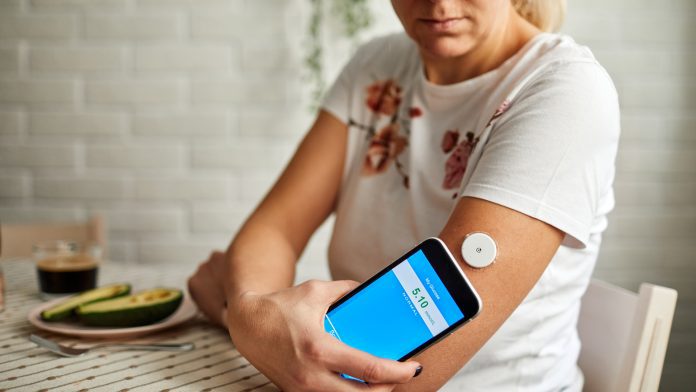
The NHS has revealed that cutting-edge flash glucose monitors are now available for all UK patients with Type 1 diabetes, making the life-saving technology accessible for those who need it most.
New guidance published by the National Institute for Health and Care Excellence (NICE) has enabled the life-changing technology to be rolled out to type 1 diabetes patients across the UK. The development builds upon the NHS Long Term Plan that has already helped nearly three in five Type 1 diabetes patients access the flash glucose monitors that allow individuals to monitor their glucose more efficiently and regularly.
How do the flash glucose monitors work?
Flash glucose monitors are small, wearable devices that are the size of a £2 coin. The technology includes a sensor that sits on the arm, allowing patients to analyse their glucose levels with a one-second scan.
The monitors link to a smartphone app where individuals can access the data collected by the device. This innovation is a significant advancement of conventional monitoring systems, enabling patients to view patterns over time, comparing current and previous glucose levels in addition to forecasting what the levels could rise to.
New research outlined this week at the Diabetes UK Professional Conference 2022 demonstrated that flash glucose monitors not only improve blood glucose levels for Type 1 diabetes patients but also positively impact their quality of life. Eligible patients can access the monitors on prescription from their local GP or diabetes team.
The NHS Long Term Plan
A target of ensuring that 20% of people with Type 1 diabetes had access to flash glucose monitors by March 2021 is included in the NHS Long Term Plan. Recent data shows that nearly three-fifths are already accessing the technology.
The NHS is making monumental steps to tackle and treat diabetes through the NHS Diabetes Prevention Programme, with research suggesting that thousands of people are not developing Type 2 diabetes due to the scheme.
Currently, the NHS invests £10 billion per year on diabetes – nearly 10% of its entire budget. The widespread implementation of flash glucose monitors will potentially alleviate this economic burden in addition to reducing diabetes-associated illnesses and hospitalisations.
National NHS Specialty Adviser for Diabetes, Professor Partha Kar, said: “This announcement is the biggest step forward for type 1 diabetes care in years, allowing everyone eligible to have one of these easy to use pieces of tech if they want to – building on the success of the NHS in its rollout so far. I am delighted to see NICE endorse the use of this technology.
“These monitors are a win-win – they support diabetes patients to live healthier lives, reduce their risk of hospitalisation while also helping to reduce pressure on NHS services and provide better value for money for taxpayers.”
25-year-old Olivia from Essex, who was diagnosed with type 1 diabetes aged seven, said: “Before I started using a flash glucose monitor, I carried my blood glucose testing kit with me everywhere and would have to test up to eight times per day – I was pricking my finger and testing my blood sugar before breakfast, before lunch, before dinner and before bed. Before driving in the car, I would need to test, and after driving for two hours, I would need to stop to test – endless testing!
“Growing up with diabetes, I’d never dreamed that a device like a flash glucose monitor, where you don’t need to finger prick to know what your levels are, would be developed in my lifetime – and when I first started using one, I couldn’t quite believe something so small had such an impact on managing my diabetes.
“Since using a flash monitor, I’ve seen a huge improvement as I can make informed decisions when taking my insulin by looking at trends. But, most importantly, it’s helped me have more confidence and improved my mental well-being.”









